forest fire
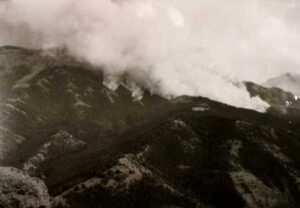
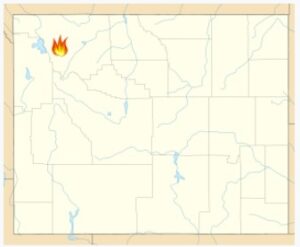 Lightning strikes are a major source of wildland fires. On August 18, 1937, a lightning strike in the Shoshoni National Forest, approximately 35 miles west of Cody, Wyoming, started the Blackwater Fire. During the course of fighting that fire, fifteen firefighters lost their lives when a dry weather front caused the winds to suddenly increase and change direction. The men were caught and had no way out. The fire spread quickly into the dense forest, creating spot fires, that trapped some of the firefighters in a firestorm. Nine of the firefighters died during the fire, while six others died from severe burns and respiratory complications a short time later. Another 38 firefighters were injured. The loss of US professional wildland firefighters from this fire was greater than any other fire in the 103 years between the Great Fire of 1910 and the Yarnell Hill Fire in 2013.
Lightning strikes are a major source of wildland fires. On August 18, 1937, a lightning strike in the Shoshoni National Forest, approximately 35 miles west of Cody, Wyoming, started the Blackwater Fire. During the course of fighting that fire, fifteen firefighters lost their lives when a dry weather front caused the winds to suddenly increase and change direction. The men were caught and had no way out. The fire spread quickly into the dense forest, creating spot fires, that trapped some of the firefighters in a firestorm. Nine of the firefighters died during the fire, while six others died from severe burns and respiratory complications a short time later. Another 38 firefighters were injured. The loss of US professional wildland firefighters from this fire was greater than any other fire in the 103 years between the Great Fire of 1910 and the Yarnell Hill Fire in 2013.
This was not what would be considered a large fire by wildland fire standards, burning only 1,700 acres of old-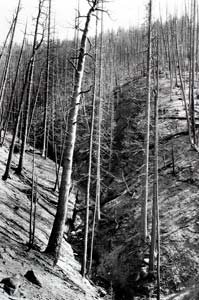
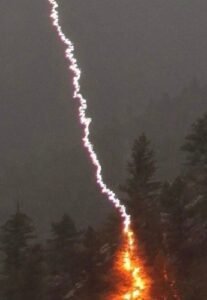 growth forest dominated by Douglas fir trees on the west slopes of Clayton Mountain, but it was by far one of the deadliest. The temperatures that day were about 90 °F, with a relative humidity was only 6 percent. Though most of the firefighters consisted of Civilian Conservation Corps (CCC) employees, they were led by more experienced United States Forest Service (USFS) fire managers. In the first half of the 20th century, firefighters used mostly hand tools to suppress wildfires, and all gear was carried by the firefighters or by pack animals. To further complicate matters, weather forecasting and radio communication were generally poor or nonexistent…leaving the firefighters virtually alone with the fire.
growth forest dominated by Douglas fir trees on the west slopes of Clayton Mountain, but it was by far one of the deadliest. The temperatures that day were about 90 °F, with a relative humidity was only 6 percent. Though most of the firefighters consisted of Civilian Conservation Corps (CCC) employees, they were led by more experienced United States Forest Service (USFS) fire managers. In the first half of the 20th century, firefighters used mostly hand tools to suppress wildfires, and all gear was carried by the firefighters or by pack animals. To further complicate matters, weather forecasting and radio communication were generally poor or nonexistent…leaving the firefighters virtually alone with the fire.
Following the deaths and injuries to the firefighters, the investigation and analysis of the fire and how it progressed, led the USFS to develop better ways to provide a more immediate response to combat fires. The development of the smokejumper program in 1939 was one of the major changes to came about from this fire. Another major change was the Ten Standard Firefighting Orders, a standardized set of wildland firefighting principles, were developed in 1957. “The Ten Standard Firefighting Orders are a set of systematically organized rules designed by a USDA Forest Service task force to reduce danger to personnel and increase firefighting efficiency.” They are: “1. Keep informed on fire weather conditions and forecasts; 2. Know what your fire is doing at all times; 3. Base all actions on current and expected behavior of the fire; 4. Identify escape routes and safety zones and make them known; 5. Post lookouts when there is possible danger; 6. Be alert. Keep 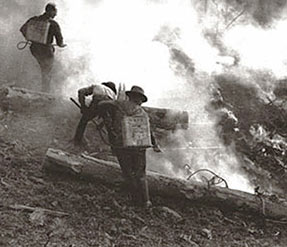
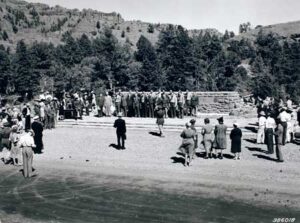 calm. Think clearly. Act decisively; 7. Maintain prompt communications with your forces, your supervisor, and adjoining forces; 8. Give clear instructions and ensure they are understood; 9. Maintain control of your forces at all times; 10. Fight fire aggressively, having provided for safety first.” There is no doubt that these rules and the smokejumpers program have saved countless lives. A year after the tragedy, survivors and their fellow employees constructed several memorials at the scene of the incident.
calm. Think clearly. Act decisively; 7. Maintain prompt communications with your forces, your supervisor, and adjoining forces; 8. Give clear instructions and ensure they are understood; 9. Maintain control of your forces at all times; 10. Fight fire aggressively, having provided for safety first.” There is no doubt that these rules and the smokejumpers program have saved countless lives. A year after the tragedy, survivors and their fellow employees constructed several memorials at the scene of the incident.
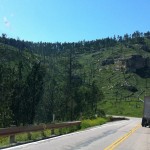 A few years ago, a woman whose name I don’t remember, decided that because her boyfriend broke up with her, she would start a forest fire…to get even with him. An odd thought since she was a fire fighter for the forest service, and he was not. She got caught because she left his note where she set the fire. I’m sure she thought the evidence would be burned up, but somehow it wasn’t. She is now serving time in federal prison for her acts of total disregard for the safety of others, and for destruction of federal property. That really hurt her ex-boyfriend, right. I mean, she is in prison, and they are not back together. Maybe he saw something in her that others didn’t see, like psychotic tendencies.
A few years ago, a woman whose name I don’t remember, decided that because her boyfriend broke up with her, she would start a forest fire…to get even with him. An odd thought since she was a fire fighter for the forest service, and he was not. She got caught because she left his note where she set the fire. I’m sure she thought the evidence would be burned up, but somehow it wasn’t. She is now serving time in federal prison for her acts of total disregard for the safety of others, and for destruction of federal property. That really hurt her ex-boyfriend, right. I mean, she is in prison, and they are not back together. Maybe he saw something in her that others didn’t see, like psychotic tendencies.
Don’t get me wrong, I am not without feelings. I just don’t understand why she would destroy a forest that will take years to come back…if it ever does. I love the Black Hills, which is where this woman chose to unleash her rage, and I hate to see such a beautiful place so battered and scarred by the vicious acts of one woman. The forest will take many years to even resemble the beautiful place it was back then. I will always love it , scarred or beautiful, and I know fires can happen that could bring the same result as this, but they will not be deliberate, and that makes all the difference to me. If she was looking for fame or pity, she failed miserably in her quest, because it is not her name I remember, just what she did.
Every time I come into the Black Hills, I must now drive through that reminder, as well as every time I leave. I am very saddened, because in Wyoming, trees are not so abundant,  and there is a lot more open spaces and…well, I love the forest. It is so hard to drive through my beloved Black Hills looking like a tornado just went through. And that is how it will be for some time to come.
and there is a lot more open spaces and…well, I love the forest. It is so hard to drive through my beloved Black Hills looking like a tornado just went through. And that is how it will be for some time to come.
I feel like this woman has cheated so many people out of the beauty of this area. I try not to be angry, but it is really hard. I forgive her, because I know it is the right thing to do, and I hope that she has learned that this was no solution, and she is probably better off without the ex-boyfriend. I hope she can turn her life around and because the way she has chosen so far is hurtful to herself and to those around her.

